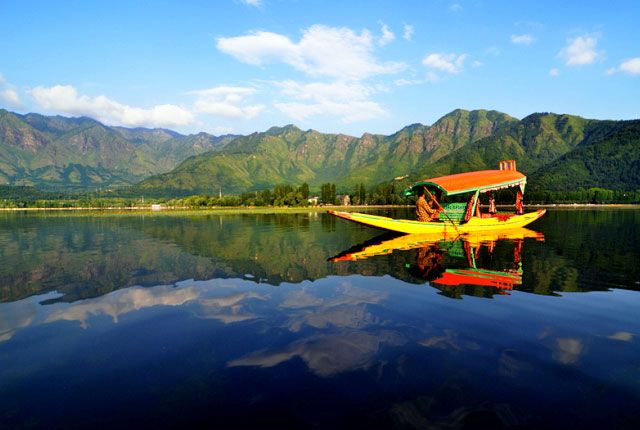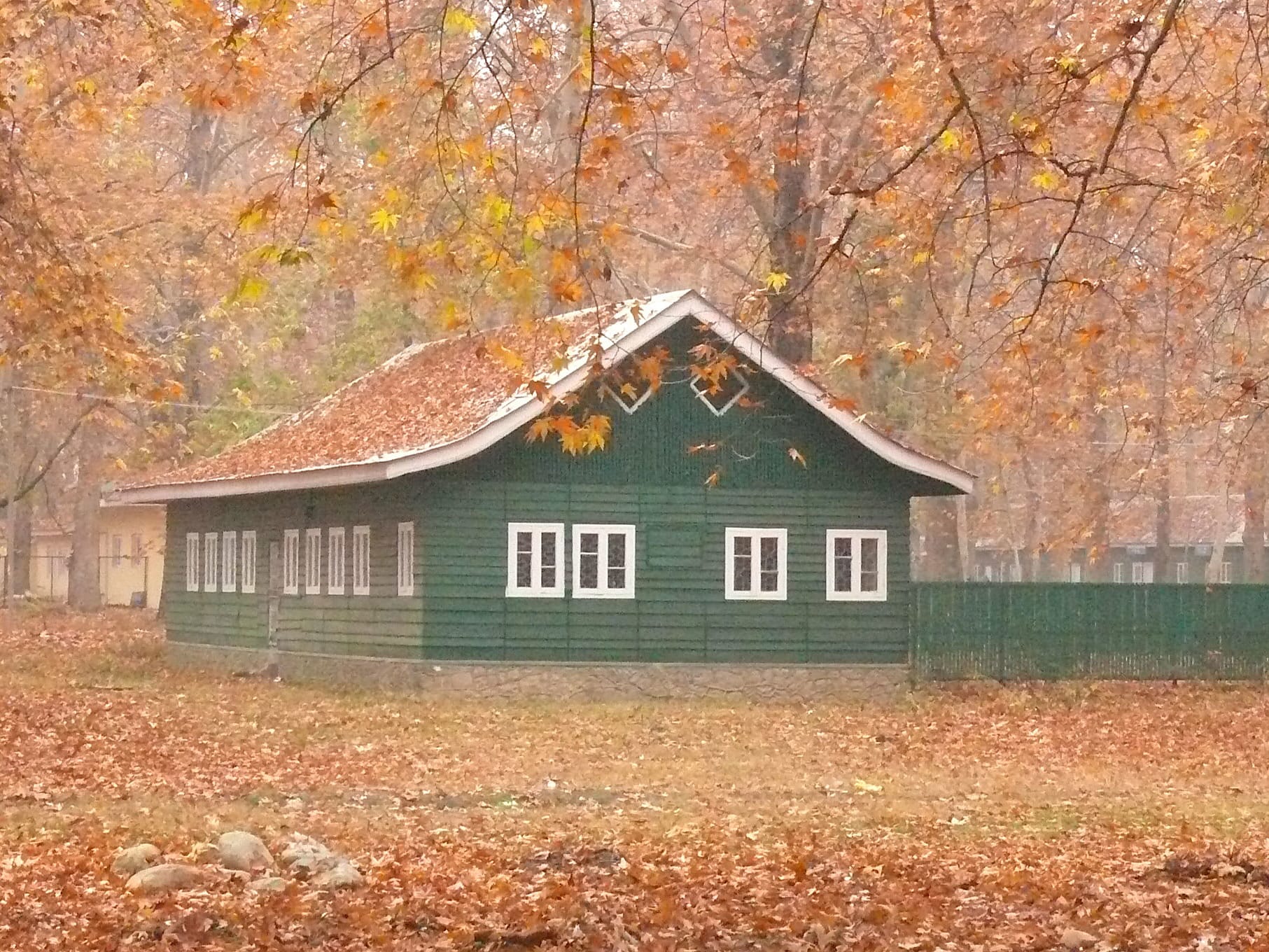
Naseem Bagh Srinagar : A Historic Kashmir Garden
Table of Contents
ToggleOverview
Kashmir, often described as “Paradise on Earth,” has attracted thousands of visitors from all over the world to its enchanted beauty every year. Among many such natural wonders of the region is Naseem Bagh, a historical garden located on the northern banks of Dal Lake near Srinagar. One of the gems of the cultural wealth and natural grandeur of Kashmir lies beneath ancient Chinar trees, planned on the pattern of the Mughals. This blog about Naseem Bagh tells its history, beauty, significance, and all that you must know to savor this time-encircled gem.
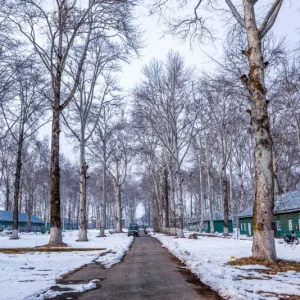
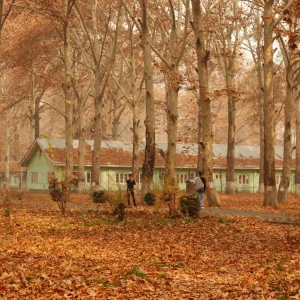

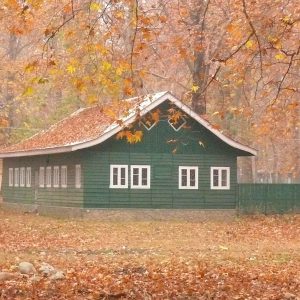
Introduction to Naseem Bagh
Naseem Bagh is famously known as the “Breeze Garden.” It lies in the lap of nature, on the shores of Dal Lake, a serene abode that has served as a shelter to its residents and guests over the years. So far, it has been a haven of solace for locals and tourists who come here to satiate their desire with the beauty of the Kashmir Valley. Whether it is history or nature, Naseem Bagh caters to all.
The garden is renowned for its natural beauty and historical importance. Built during the Mughal period, Naseem Bagh is the epitome of Mughal landscaping and carries trees that survived the ages. From the tranquil atmosphere to preserved cultural heritage, Naseem Bagh bears witness to Kashmir’s artistic and ecological heritage.
History and Background of Naseem Bagh
The history of tracing Naseem Bagh dates back to the Mughal rule of Shah Jahan in the 17th century. It was sponsored by his elder son, Dara Shikoh, whom intellectual pursuit merged with an aesthetic appreciation for natural beauty and was a scion of paramount importance in Mughal Court. Their importance in the development of the landscape of Kashmir pertaining to culture as well as architectural aspects is praiseworthy. He envisioned Naseem Bagh as a serene space wherein the glory of the Mughal dynasty could seamlessly integrate with the majesty of the natural world.
Naseem Bagh was conceived as a royal garden, like most of the Mughal gardens, which followed the Persian-style plan of straight pathways, running water channels, and greenery. These gardens were to represent the idea of “paradise on earth,” where heaven and earth unified in perfect symphony. Naseem Bagh was no different; it had water channels running through it, symbolizing the four rivers of paradise. It did, however, become changed hands with the downfall of the Mughal Empire and became partially ruined, though still holding much appeal to the eyes.
The Chinar Trees of Naseem Bagh
The most significant features that differentiate Naseem Bagh are the fabulous Chinar trees, which really make the place a very distinct landmark. Chinar, or the Platanus orientalis, is considered the national tree of Kashmir and is renowned for its lifetime and stately look. This tree lives from over 500 years and some of these represent some of the oldest and enduring symbols of the natural heritage of this region.
The Chinar trees in Naseem Bagh are said to be more than 350 years old and silently watch the history of the garden. During the autumn months, especially the broad leaves are turned into brilliant shades of red, orange, and yellow, which are spectacular to see. Chinar trees form an integral part of the garden ecosystem, providing shade and contributing to the cool and serene atmosphere within the garden. The massive structure gives a feel to the visitor of this being a time when nature and beauty had triumphed.
Naseem Bagh: Architectural Design and Plan
The structure of Naseem Bagh is as per classical dictums of Mughal garden architecture. The Mughal emperors were known for blending art, nature, and water works into their times, as is well exemplified in Naseem Bagh.
Symmetry and Water Features
A characteristic feature of Mughal gardens is their symmetrical pattern. Naseem Bagh divides its different sections with something unique to offer to the visitor. The garden was planned to bring about harmony and balance, a long pathway running along the center of the axis to the lake, guiding the visitors to a silent procession toward the lake. On both sides of the pathway, there are beautiful lawns, trees, and fountains, which create a great sense of peaceful serenity.
The other feature of the garden is the presence of water. Running water in Mughal gardens symbolizes rivers of paradise, which give life. In Naseem Bagh, water channels run through the garden, which are fed by the nearby Dal Lake. The trickling of water helps the sense in improving the whole scene of peacefulness of a garden. Throughout the garden, small ponds, fountains contribute to the visual effects and serene tranquility with it.
Terraced Form
The garden is designed in a terraced form. Terracing is the hallmark of Mughal gardens. This design does not only provide an aura of grandeur but also emphasizes the natural topography of the region. Gradual elevation while walking through the garden provides views of Dal Lake, Hazratbal Shrine, and the distant mountains.
Pavilions and Courtyards
It’s all interspersed with small pavilions and courtyards which serve quiet contemplative, or resting area after walking around Naseem Bagh. One could sit in one of those pavilions with an Mughal sense of atmosphere which offers a nice sitting place that also allows peeking through views, dodging glare from sun light. It can even demonstrate the overview for some pavilions of major water channels of which a grand shot could be clicked for photography, or in other words being silent space of meditation.
Flora and Fauna of Naseem Bagh
In addition to Chinar trees, Naseem Bagh is full of other plant species, both indigenous and cultivated. The design of the garden has been so planned that it allows for a wide range of flora to be experienced by the visitors throughout the year.
The Flowering Seasons
Literally, Naseem Bagh erupts in color during spring and summer. This is one of the ideal places to sit in the gardens for viewing the gorgeous tulips, roses, lilies, and all the other flowering ornamental varieties. The smell from the flowers just wafts around and adds an olfactory element to the sensory delight of being here.
In autumn, the entire garden will be a marvelous blend of red, gold, and amber; perhaps this can be the finest time to go to Naseem Bagh. Soft golden light bathes the garden very beautifully contrasting against the deep blue hue of Dal Lake against multicolored foliage.
Bird Watching in Naseem Bagh
Naseem Bagh is also known for its greenery and abundance of flora. Various species of birds can be spotted here. Sparrows, pigeons, and other common birds are present in the garden. In the migration seasons, migratory birds can be seen here; which creates a good scope for bird watching. For nature lovers, the diversity of flora and fauna makes Naseem Bagh an interesting destination.
Serenity of Naseem Bagh: A Place for Reflection
The serenity at Naseem Bagh remains unbeatable. All that the garden needs now is to have silence with this gentle sound it makes passing by channels of waters. This will be perfect times for contemplations and relaxation about anybody. Quiet meditation space and a book could be read quietly in Naseem Bagh. It further makes a background for nature walk and photography with perfection.
It is one of the hotspots for photography, offering extensive scope with the play of natural light among massive Chinar trees and the reflection of the garden in Dal Lake. You could photograph vibrant autumn foliage or serene landscapes against a blue sky, and everything falls in the range of simply breathtaking views Naseem Bagh has in store.
A quiet, well-groomed passage with lush greens also makes this a great venue for a pleasant walk. There is a gentle stillness at the garden which while walking in the many sectors, you sense the deep-rooted connection to both nature and its history. That’s the beauty of slowing one’s pace with such surroundings to admire.
Best Time To Visit Naseem Bagh
It all depends on which experience you seek at Naseem Bagh. Here are some recommended times of visits.
Spring to Summer: March to August
In the spring and summer seasons, the garden comes alive with the display of colors that flowers make everywhere in the garden. The weather becomes perfect for looking around and for a casual promenade without some destination to go for. The verdure of grass and the odor of flowers perfuming the atmosphere make it one of the greatest days to do nothing but chill.
Fall: September to November
Probably the most magical season to visit Naseem Bagh is in autumn time. This is due to the reason that when autumn foliage changes in Chinar trees, this place seems beautiful with vibrant shades of red, orange, and yellow. The fresh autumn atmosphere along with the view of trees decorated with vibrant shades make this garden one of the best at this particular time for discovery. Therefore, photography artists prefer visiting Naseem Bagh during autumn as it has spectacular scenery.
Winter: December to February
If you are a lover of winter landscape, Naseem Bagh takes on an altogether different charm in the cold winter months. There is a possibility of snowfall transforming the garden into a winter wonderland. Though the temperature would be lower, the serenity of the garden along with quiet peaceful snowfall provides a very unique and quiet experience.
How to Reach Naseem Bagh
Naseem Bagh is close to Hazratbal Shrine and Dal Lake. It is available from all corners of the city Srinagar. Here are the ways of reaching the garden:
By Road
Naseem Bagh is 5 kilometers from the city center of Srinagar. You can hire a taxi, rickshaw to reach the garden. The road is quite paved and sceneries of Dal Lake and mountains are quite a treat in this drive.
By Shikara
You may also choose to take a ride in shikara while you are putting up around Dal Lake. That will give a beautiful boat ride where you will pass by the serene lake beauty accompanied by its surrounds.
Conclusion
Naseem Bagh is a perfect blend of nature, history, and serenity that offers an opportunity for visitors to discover one of Kashmir’s best-kept secrets. Whether you are a nature lover, history enthusiast, or someone looking for peace and serenity, Naseem Bagh will give you a time that you’ll never forget. Lush gardens, historical importance, and breath-taking views are all that stand for Naseem Bagh, a time-less testament to the beauty and cultural heritage of Kashmir.
For those planning a trip to Kashmir, Naseem Bagh is a must-visit destination. Make sure to include it in your itinerary and take the time to enjoy the peaceful surroundings, breathe in the fresh air, and absorb the beauty of the place. You’ll find that Naseem Bagh is more than just a garden—it’s a place that touches your soul and leaves a lasting impression.
How to book Kashmir tour?
Contact a travel agency that specializes in Kashmir tours. You can reach out to the following for assistance:
- Phone:
- +91 7889 655596
- +91 7006 891267
- Email:
Inquire about tour packages, itineraries, and pricing, and confirm your booking for a memorable winter experience!
People Also Ask
What is Naseem Bagh?
Naseem Bagh is a historical garden located on the northern banks of Dal Lake in Srinagar, Kashmir. It is known for its serene environment, historical significance, and majestic Chinar trees. The garden dates back to the Mughal era and was commissioned by Dara Shikoh, the eldest son of Emperor Shah Jahan.
How old is Naseem Bagh?
Naseem Bagh was established in the 17th century, making it over 350 years old. It was originally created by Dara Shikoh during the Mughal period as a royal garden to embody the concept of paradise on earth.
What makes Naseem Bagh unique?
Naseem Bagh is unique because of its ancient Chinar trees, Mughal-inspired layout, and tranquil atmosphere. The garden’s design includes symmetrical pathways, water channels, and beautiful pavilions, reflecting Mughal garden architecture. It offers a peaceful escape amidst nature’s beauty.
When is the best time to visit Naseem Bagh?
The best time to visit Naseem Bagh is during autumn (September to November) when the Chinar trees turn vibrant red, gold, and orange. Spring and summer (March to August) are also great for enjoying the blooming flowers and lush greenery.
What are the key attractions in Naseem Bagh?
The key attractions of Naseem Bagh include the ancient Chinar trees, flowing water channels, terraced garden design, peaceful pavilions, and stunning views of Dal Lake and the surrounding mountains.
Is Naseem Bagh accessible to tourists?
Yes, Naseem Bagh is accessible to tourists. It is located near Hazratbal Shrine and Dal Lake and can be reached by taxi, rickshaw, or shikara ride. The garden is open to the public year-round.
Are there any entry fees for Naseem Bagh?
As of now, Naseem Bagh does not have any significant entry fees. However, it is recommended to check with local authorities for any updated entry fee or regulations before visiting.
How do I get to Naseem Bagh from Srinagar city?
Naseem Bagh is about 5 km from Srinagar city center. You can take a taxi, a rickshaw, or hire a private vehicle to reach the garden. Alternatively, a shikara ride across Dal Lake offers a scenic and unique route.
What can I do at Naseem Bagh?
Visitors can enjoy peaceful walks, photography, birdwatching, or simply relax under the shade of ancient Chinar trees. It’s a great place for meditation, reading, or spending time in nature. The garden’s quiet atmosphere makes it perfect for reflection.
What is the historical significance of Naseem Bagh?
Naseem Bagh has historical importance as it was built by Dara Shikoh, the Mughal prince, during the Mughal era. It is part of Kashmir’s rich cultural heritage, showcasing the Mughal garden design and their connection to the landscape of the region.
Can I photograph at Naseem Bagh?
Yes, Naseem Bagh is an excellent place for photography. The garden offers breathtaking views, particularly during autumn when the Chinar trees turn vibrant colors. It’s a perfect spot for nature, landscape, and architectural photography.
What flora can be found in Naseem Bagh?
Naseem Bagh features a variety of flora, including the iconic Chinar trees, as well as tulips, roses, lilies, marigolds, and other ornamental plants. In spring and summer, the garden is especially colorful due to the blooming flowers.
Is Naseem Bagh a good place for picnics?
Yes, Naseem Bagh is an ideal spot for a picnic. The lush green lawns, peaceful environment, and shady spots under Chinar trees provide a comfortable and scenic location for a relaxing picnic with friends or family.
Is Naseem Bagh open throughout the year?
Yes, Naseem Bagh is open throughout the year. However, the experience varies depending on the season. Spring, summer, and autumn offer lush landscapes, while winter offers a picturesque snowy scene.
What wildlife can be seen at Naseem Bagh?
Naseem Bagh attracts various species of birds, including sparrows, pigeons, and migratory birds during certain seasons. The lush vegetation also supports other small wildlife and insects, making it a nature lover’s paradise.
How long should I spend at Naseem Bagh?
Most visitors spend about 1 to 2 hours at Naseem Bagh, depending on how much time they want to spend walking, taking photos, and exploring the garden. If you enjoy photography or a quiet escape, you may wish to linger longer.
What are some nearby attractions to Naseem Bagh?
Nearby attractions include Dal Lake, Hazratbal Shrine, Nishat Bagh, and Shalimar Bagh. All of these sites offer a mix of natural beauty and cultural significance, making them ideal for a complete day trip around Srinagar.
Are there any food options available at Naseem Bagh?
While Naseem Bagh itself does not have many food outlets, there are several restaurants and cafes nearby in Srinagar where you can enjoy local Kashmiri cuisine or snacks after your visit.
Can I visit Naseem Bagh by boat?
Yes, you can take a shikara ride on Dal Lake to reach Naseem Bagh. This scenic boat ride enhances your experience and offers a unique perspective of the garden and its surroundings.
Is Naseem Bagh suitable for elderly visitors?
Yes, Naseem Bagh is suitable for elderly visitors. The peaceful environment, shaded areas, and flat walking paths make it accessible for people of all ages, though some might need assistance with walking for longer distances.
What makes Naseem Bagh a great place for relaxation?
Naseem Bagh offers a quiet, peaceful environment with beautiful scenery, ancient trees, and the soothing sounds of water. It’s an ideal place for visitors seeking a calming, nature-filled escape from the hustle and bustle of city life.
Is there any cultural significance to Naseem Bagh?
Yes, Naseem Bagh holds cultural significance in Kashmir as a symbol of the Mughal era’s artistic influence. It is part of the region’s architectural and horticultural legacy, contributing to the rich cultural heritage of Kashmir.
What is the best time of day to visit Naseem Bagh?
Early morning and late afternoon are the best times to visit Naseem Bagh, as the temperatures are cooler, and you can enjoy the beauty of the garden in soft sunlight. The garden is also less crowded during these hours, allowing for a more peaceful experience.
What should I wear when visiting Naseem Bagh?
When visiting Naseem Bagh, wear comfortable shoes suitable for walking, as there are pathways to explore. In summer, light clothing, sunscreen, and a hat are recommended. In winter, make sure to dress warmly, as temperatures can drop, and snowfall is possible.
How can I get more information about Naseem Bagh before visiting?
You can gather more information about Naseem Bagh by researching online through tourism websites or by visiting local tourist information centers in Srinagar. Additionally, local guides and residents can provide useful tips and recommendations.



